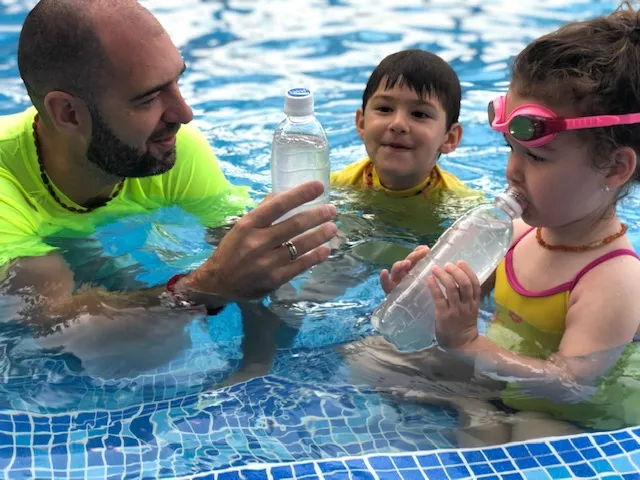
- +61 1300 704 750
- admin@parentinggenie.com.au
- PO Box 706, Townsville, QLD 4810

Genie Chat
As the temperature rises, families flock to pools, beaches, and lakes to cool off and enjoy the water. While water play is a favorite pastime, it’s essential to prioritize water safety to prevent accidents and ensure a fun and stress-free experience for your child. In this guide, we’ll dive into the world of drowning prevention and swim safety, providing you with the knowledge and tools to keep your child safe in and around water.
1: Supervision is Key

Always supervise your child when they are in or near water. Active, focused supervision is the most effective way to prevent accidents.
2: Teach Swim Basics
Enroll your child in age-appropriate swimming lessons to teach them essential water skills such as floating, kicking, and basic strokes.
3: Life Jackets Save Lives

For young children and inexperienced swimmers, use U.S. Coast Guard-approved life jackets in and around open water. They provide buoyancy and peace of mind.
4: Familiarize with Water Depth
Teach your child to be aware of water depth. Ensure they know where it’s safe to swim and where it’s not. Never allow diving in shallow water.
5: Learn CPR

Gain the skills to perform CPR on children and adults. It’s a valuable skill that can save lives in emergency situations.
6: Barriers and Gates
Install proper barriers, gates, and pool fences to prevent unsupervised access to the pool area. Make sure gates are self-latching and out of reach for children.
7: Buddy System
Encourage the buddy system, where children always swim with a friend or family member. This promotes accountability and enhances safety.
8: Educate About Rip Currents
If swimming in the ocean, teach your child about rip currents and how to escape them. Swimming parallel to the shore is key.
9: Stay Hydrated

Even while swimming, it’s important to stay hydrated. Dehydration can lead to fatigue and increase the risk of accidents.
10: Set Clear Rules
Establish water safety rules and ensure your child understands them. For example, no running around the pool and always asking for permission before entering the water.
11: Stay Close
Keep your child within arm’s reach, especially if they are not strong swimmers. This quick access allows you to assist if needed.
12: Sun Protection
Don’t forget about sun safety. Apply sunscreen generously and use protective clothing, hats, and sunglasses.
Water play can be both enjoyable and safe with the right precautions and awareness. By following these essential water safety tips, you empower your child to have a positive and secure experience around pools, beaches, and other water environments. Remember, being prepared and proactive can make all the difference in preventing accidents and ensuring that water-related activities remain a source of joy for the whole family.
Subscribe to Virtual Parenting Hub for more comprehensive guides, tips, and resources on keeping your child safe and thriving in various environments. Join our community of parents committed to promoting child safety and well-being. Together, we can make a splash in creating a safer world for our children.
Also Read: Guardians of Safety: Empowering Kids with Personal Safety Skills